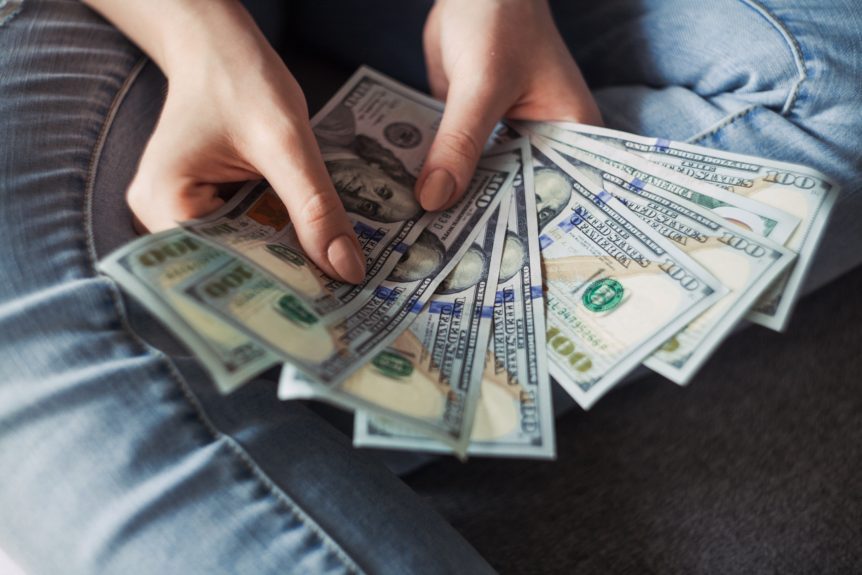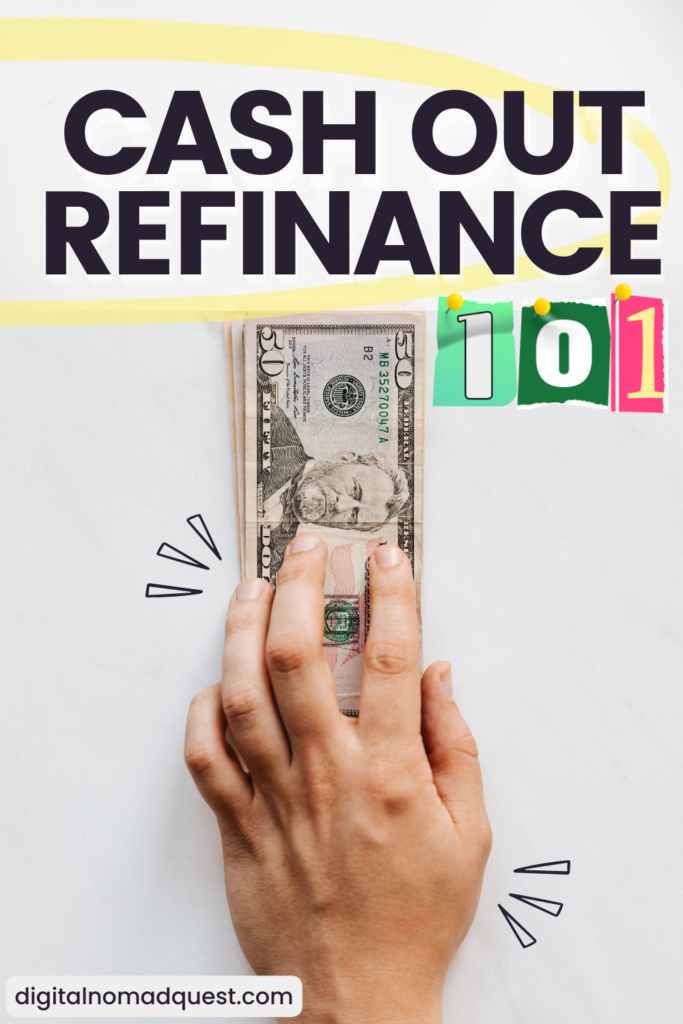In this episode we’ll go over what a cash out refinance is and talk about the pros and cons of refinancing your home mortgage.
A cash-out refinance means you’re taking out a new loan worth more than your original mortgage. In general, you can borrow up to 80% of your home’s value, but this amount depends on which lender you use. You would then use the new loan to pay off the original loan, and you would keep the remaining cash leftover to do whatever you want with it. It can be quite beneficial to your financial situation if done correctly. As an example, we used it to help us with building our rental portfolio!
Cash Out Refinance: Pros and Cons of Refinancing a Mortgage
Below is a transcription of the podcast. This transcription was taken from Otter.ai so it might not be completely accurate:
This is the digital nomad quest podcast with Sharon Tseung. teaching people how to build passive income, become financially free and design their best lives.Hey guys, Sharon from digital nomad quest, and today we’re gonna go over how a cash out refinance works, the pros and cons of it depending on your situation, as well as my personal story around it. So there are many situations where a cash out refinance is going to make a lot of sense for you. For me, it was a great experience because I use the burr method, which is buy rehab rent refinance, repeat, this allowed me to borrow equity for my rental property, which gave me access to more capital to put back into more properties. But I also want to talk about the cash out refinance in different situations, if you’re trying to buy your primary home, for example, now, if this is all going over your head, don’t worry, we’re gonna break it all down today. Now you’re probably wondering what the heck is a cash out refinance? A cash out refinance is basically when you take out a new loan that’s worth more than your original mortgage, you would use a new loan to pay off your original mortgage and you’d keep the remaining cash left over to do whatever you want with it. Now there are going to be risks with this. So you want to make sure that the cash left over you use it to help you improve your finances in some way. In our case, we’re using it to purchase more rental properties, but you could use it to help you pay off consumer debt you may have to help you consolidate or to help you renovate your primary home for example, in general, you can borrow up to 80% of the home’s value. But make sure to shop around for different lenders to see if you can borrow more with different ones. Now let’s walk through an example of a cash out refinance. Let’s say you bought a home and you got a $200,000 mortgage on it. And now you have $100,000 left of balance on it. And because of appreciation over time, the home is now worth $300,000. And like I said, you can generally borrow up to 80% of the value. So 80% of their $100,000 is $240,000. Using that $240,000 You can pay off the original mortgage, which is now $100,000 left of balance on it and then maybe pay about $10,000 in closing costs and now you have $130,000 left to play with. Ideally, you’ll get a better interest rate with this cash out refinance as compared to your previous loan. And then you can use that money that’s put in your pocket to strategically help your finances. So in this scenario, you’re getting about $130,000 into your pocket. And then you can use that for renovations or for paying off consumer debt and you’re getting a better interest rate on your loan. So as you can see, there are a lot of great benefits to doing this. You’re going to have a larger mortgage though. So your monthly payments should be a bit higher. But again, you’re lowering your interest rate, which is really good for you. But also make sure that you’re not over leveraging and taking on too much debt that you can’t sleep at night, make sure that you do the cash out refinance in a way that really benefits you and helps you improve your finances. Now let’s go through my example as well. We purchased a home at $120,000. And then we put in another $80,000 for mold remediation and renovations. So altogether we had about $200,000 into the deal. to fund this we use a combination of our own capital as well as a private money loan at 8% interest after repairing the property we worked with property managers to help us get tenants in and they’re paying a rental income of 2295 per month. Now with the repairs that we did, we ended up bringing the property up to $330,000, which was appraised value. Now instead of selling it and getting a profit we decided to do a cash out refinance, and we got a loan for 75% of the home’s value. That way we could keep the home as a rental and cash flow from it as well as getting money back out. So we thought 75 was enough for us even though we could have done at and then got more cash back. Our closing costs are honestly high at around $10,000. So ultimately, we ended up with a $237,000 check after closing costs and everything. This process took about seven months. And essentially let us take out all the money in the deal, which basically gives us infinite returns, we have more capital to buy more and more properties. And then we’re also left with a cash flowing rental property that we think is going to appreciate a lot over time. So let’s talk about the pros and cons of a cash out refinance. Now, of course during this process and getting a larger loan means you can tap into a significant amount of money. Like I mentioned, that amount of money can really improve your finances if you do it the right way. For example, paying off your consumer debt, using it to buy more rental properties or using it to increase the value of your primary home. Another pro is if you buy your home at a high interest rate and the cash out refinance could benefit you if interest rates have lowered a lot and you do the refinance and lower that interest rate for your loan. And then lastly, if you’re an investor, you can put that cash back into more rental properties just like I did in my scenario, we fixed up a distressed property to increase the property’s value, which means we can tap into more equity, pull out that capital and then use it to buy more and more properties to increase our rental portfolio because we basically have $0 in the deal now plus another $30,000 or so that we’re able to take out on top of that we’re getting infinite It returns with cash flow and appreciation. This burr strategy, like I mentioned is a way that a lot of investors increase their rental portfolio over time really quickly. Now let’s talk about the cons. So you may encounter high closing costs, we paid about $10,000, which is kind of a lot of money, but there’s always the opportunity to roll that back into your loan so you don’t have to pay that out of pocket. Another con is you’re going to incur larger debt than your previous amount because you’re pulling a larger loan. So make sure you’re not over leveraging because it can be risky to take on more debt but if you use that money in a financially beneficial way it can really improve your finances a lot so make sure you don’t spend that money on like luxury cars, clothes, bags and things like that. You want to make sure that you’re putting that money back into assets that can make more money for you or pay off high interest debt for example. So I hope you enjoyed this episode on how cash out refinances work and see if it makes sense for you in your situation. And my personal situation might not be a typical result. So make sure you do your own research.
So I hope you guys enjoyed this episode. Please make sure to rate review and subscribe. It really helps our podcast grow. And thanks again. I’ll see you guys in the next one.
Transcribed by https://otter.ai


